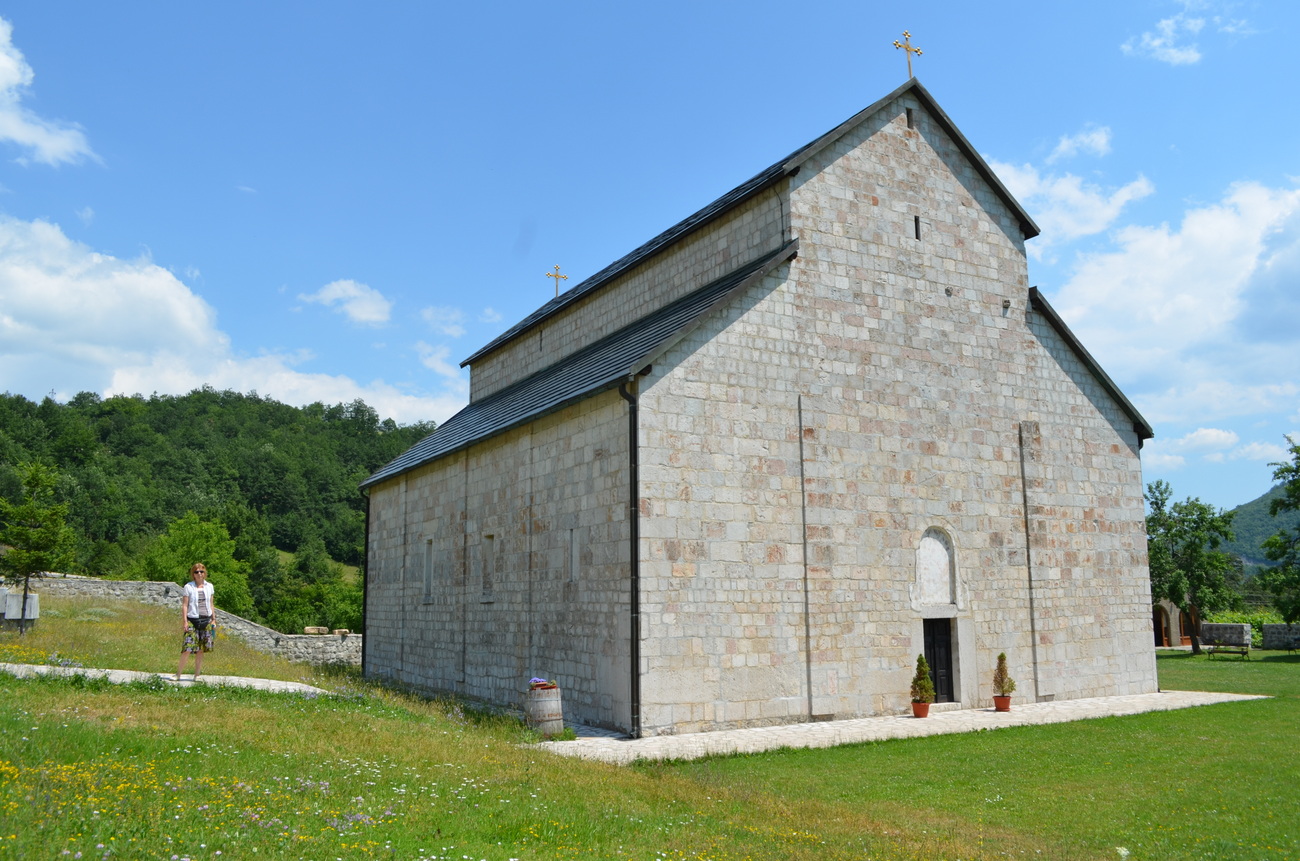|
Vlah Church
The Vlah Church ( sr, Влашка cрква, Vlaška crkva) is a Serbian Orthodox church built in 1450 in the village of Donji Kraj (on Cetinje field), Zeta, Serbian Despotate (modern day Montenegro). Stećci The church was built around 1450 on the site of Bogumils' necropolis, which had around 150 stećci (monumental, ornate tombstones). Only two of them are preserved today. Originally they faced each other, and were recently reoriented to be side by side. According to some legends, recorded for the first time by Ljubomir Nenadović, the 17th-century military commander Bajo Pivljanin and his wife are buried beneath them. According to another legend and documentary evidence the stećci mark the graves of the founders of the church—Ivan Borojević, born in Stari Vlah, and his wife Jelica. Origin of the name This church received its name for the Vlahs who guarded the cattle of Ivan Crnojević and built the church around 1450. There are several additional theories about ... [...More Info...] [...Related Items...] OR: [Wikipedia] [Google] [Baidu] |
Serbian Orthodox Church
The Serbian Orthodox Church ( sr-Cyrl, Српска православна црква, Srpska pravoslavna crkva) is one of the autocephalous (ecclesiastically independent) Eastern Orthodox Christian denomination, Christian churches. The majority of the population in Serbia, Montenegro and the Republika Srpska entity of Bosnia and Herzegovina are members of the Serbian Orthodox Church. It is organized into metropolis (religious jurisdiction), metropolitanates and eparchies, located primarily in Serbia, Bosnia and Herzegovina, Montenegro, and Croatia. Other congregations are located in the Serb diaspora. The Serbian Patriarch serves as first among equals in his church. The current patriarch is Porfirije, Serbian Patriarch, Porfirije, enthroned on 19 February 2021. The Church achieved Autocephaly, autocephalous status in 1219, under the leadership of Saint Sava, becoming the independent Archbishopric of Žiča. Its status was elevated to that of a patriarchate in 1346, and was kn ... [...More Info...] [...Related Items...] OR: [Wikipedia] [Google] [Baidu] |
Bajo Pivljanin
Bajo Pivljanin ( sr-cyr, Бајо Пивљанин – 7 May 1685), born Dragojlo Nikolić, was a Montenegrin and Serbian ''hajduk'' commander mostly active in the Ottoman territories of Herzegovina and southern Dalmatia. Born in Piva, at the time part of the Ottoman Empire, he was an oxen trader who allegedly left his village after experiencing Ottoman injustice. Mentioned in 1654 as a brigand during the Venetian–Ottoman war, he entered the service of the Republic of Venice in 1656. The hajduks were used to protect Venetian Dalmatia. He remained a low-rank ''hajduk'' for the following decade, participating in some notable operations such as the raid on Trebinje. Between 1665 and 1668 he quickly rose through the ranks to the level of ''harambaša'' ("bandit leader"). After the war, which ended unfavourably for the Venetians, the hajduks were moved out of their haven in the Bay of Kotor under Ottoman pressure. Between 1671 and 1684 Pivljanin, along with other hajduks and their ... [...More Info...] [...Related Items...] OR: [Wikipedia] [Google] [Baidu] |
Serbian Orthodox Church Buildings In Montenegro
Serbian may refer to: * someone or something related to Serbia, a country in Southeastern Europe * someone or something related to the Serbs, a South Slavic people * Serbian language * Serbian names See also * * * Old Serbian (other) * Serbians * Serbia (other) * Names of the Serbs and Serbia Names of the Serbs and Serbia are terms and other designations referring to general terminology and nomenclature on the Serbs ( sr, Срби, Srbi, ) and Serbia ( sr, Србија/Srbija, ). Throughout history, various endonyms and exonyms have bee ... {{Disambiguation Language and nationality disambiguation pages ... [...More Info...] [...Related Items...] OR: [Wikipedia] [Google] [Baidu] |
15th-century Serbian Orthodox Church Buildings
The 15th century was the century which spans the Julian dates from 1 January 1401 ( MCDI) to 31 December 1500 ( MD). In Europe, the 15th century includes parts of the Late Middle Ages, the Early Renaissance, and the early modern period. Many technological, social and cultural developments of the 15th century can in retrospect be seen as heralding the "European miracle" of the following centuries. The architectural perspective, and the modern fields which are known today as banking and accounting were founded in Italy. The Hundred Years' War ended with a decisive French victory over the English in the Battle of Castillon. Financial troubles in England following the conflict resulted in the Wars of the Roses, a series of dynastic wars for the throne of England. The conflicts ended with the defeat of Richard III by Henry VII at the Battle of Bosworth Field, establishing the Tudor dynasty in the later part of the century. Constantinople, known as the capital of the world an ... [...More Info...] [...Related Items...] OR: [Wikipedia] [Google] [Baidu] |
Religious Buildings And Structures Completed In 1450
Religion is usually defined as a social-cultural system of designated behaviors and practices, morals, beliefs, worldviews, texts, sanctified places, prophecies, ethics, or organizations, that generally relates humanity to supernatural, transcendental, and spiritual elements; however, there is no scholarly consensus over what precisely constitutes a religion. Different religions may or may not contain various elements ranging from the divine, sacred things, faith,Tillich, P. (1957) ''Dynamics of faith''. Harper Perennial; (p. 1). a supernatural being or supernatural beings or "some sort of ultimacy and transcendence that will provide norms and power for the rest of life". Religious practices may include rituals, sermons, commemoration or veneration (of deities or saints), sacrifices, festivals, feasts, trances, initiations, funerary services, matrimonial services, meditation, prayer, music, art, dance, public service, or other aspects of human culture. Religions have sa ... [...More Info...] [...Related Items...] OR: [Wikipedia] [Google] [Baidu] |



